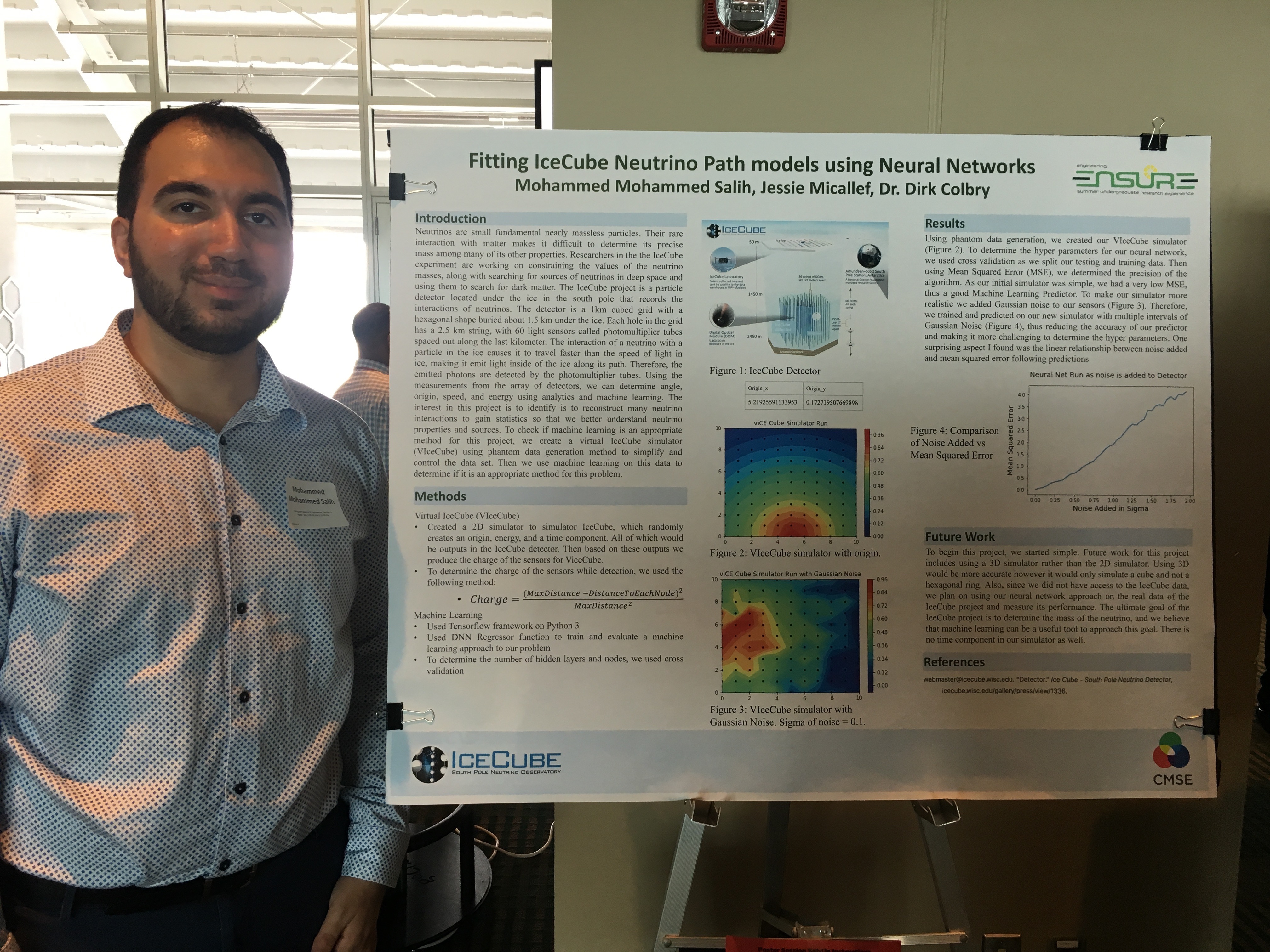Fitting iCE-Cube Neutrino Path models using Neural Networks
Tue 24 July 2018 by Dr. Dirk Colbry
This summer Mohammed Salih worked with me as part of the Engineering ENSURE Program. He presented his work with Jessie Micallef and me as a poster at MidSURE.
Poster Abstract: Neutrinos are small particles with a mass close to zero. It’s rare interaction with normal matter makes it difficult to determine its precise mass. Researchers in the the Ice Cube project are working on determining neutrinos precise mass. The Ice Cube project is a sub particle detector in the south pole that records the interactions of neutrinos. The detector is a 150 KM grid with a hexagonal shape 1 km under Ice. Each hole in the grid has a 1 km string, each with about 60 light sensors. Since a neutrino is faster than the speed of light in ice, it emits light in ice. Therefore, the emitted photon is detected by the sensors in the detector. Using the measurements from the detector, we can determine angle, origin, speed, and energy using analytics and machine learning. The interest in this project is to identify neutrinos have come from the center of the galaxy. To check if machine learning is an appropriate method for this project, we create a virtual ice cube simulator using phantom data generation method to simplify and control the data set. Then we use machine learning on this data to determine if it is an appropriate method for this problem.
